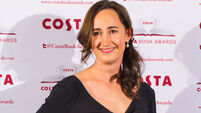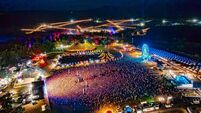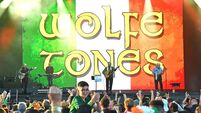Culture That Made Me: Poet Rita Ann Higgins on Mary MacSwiney and other influences
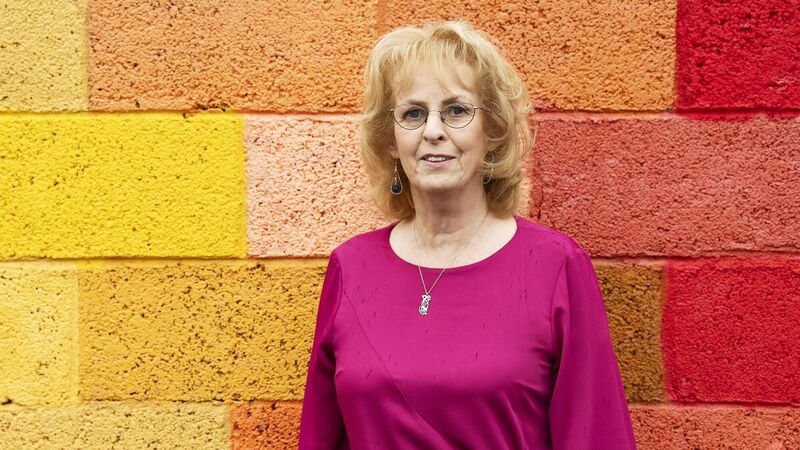
Rita Ann Higgins has a new collection of poetry, The Long Weekend. Picture: Andrew Downes
Born in 1955, Rita Ann Higgins grew up in Ballybrit, Galway city. In 1986, Salmon Poetry press published Goddess on the Mervue Bus, her first of a dozen poetry books which capture the essence of Irish life and being alive. She also writes essays, plays and screenplays, and regularly reads on the Brendan O'Connor's radio show. Her latest collection of poetry, entitled The Long Weekend, is published by Gill Books.
I didn’t read until I was in my twenties, while recovering from TB. Wuthering Heights and Animal Farm kick-started me into the world of literature. I still think of the Half-Lung Club in Thomas Mann’s Magic Mountain – how they could whistle through their pneumothorax and bamboozle passers-by, making it look as if they were whistling from inside their chests. Or did Herman Melville want us to think that Ishmael and Queequeg were lovers or were they just wrapped around each other to keep out the cold on a bed made from whalebone? A well-written book stays with you all your life, like Charlotte Perkins Gilman’s The Yellow Wallpaper or Mary Wollstonecraft’s A Vindication of the Rights of Woman.
In the early 1980s, the arts festival invited Footsbarn Theatre Company and Els Comediants to Galway. It was important to allow children to experience these street spectacles, the giddiness of it all. Huge beasts roaming through the streets. Later we had Macnas, which might have been inspired by these aforementioned companies. I recall seeing Footsbarn’s Hamlet, and all the actors were on stilts in the Big Top at Fisheries Field. Another year I saw King Lear, another A Midsummer Night’s Dream. A great way into Shakespeare. This was a cultural education and a half, all reasonably priced.
In the mid-1980s, the Artspace collective in Nun’s Island Arts Centre was founded, where you could view the likes of Kathleen Furey, Ruth McHugh, Sharon O’Malley and Marja Van Kampen – where you learnt who the up-and-coming artists were. Or you might see one of them around town at the Saturday market displaying their paintings. Brian Bourke and John Behan were already established. It was a great time to be opening up to art and literature. It led me to conclude there was life outside the working class housing estate.
Mary MacSwiney – the sister of Terence MacSwiney, the hunger striker – has been a role model for me. She was also a hunger striker. She was a great advocate for women’s rights.
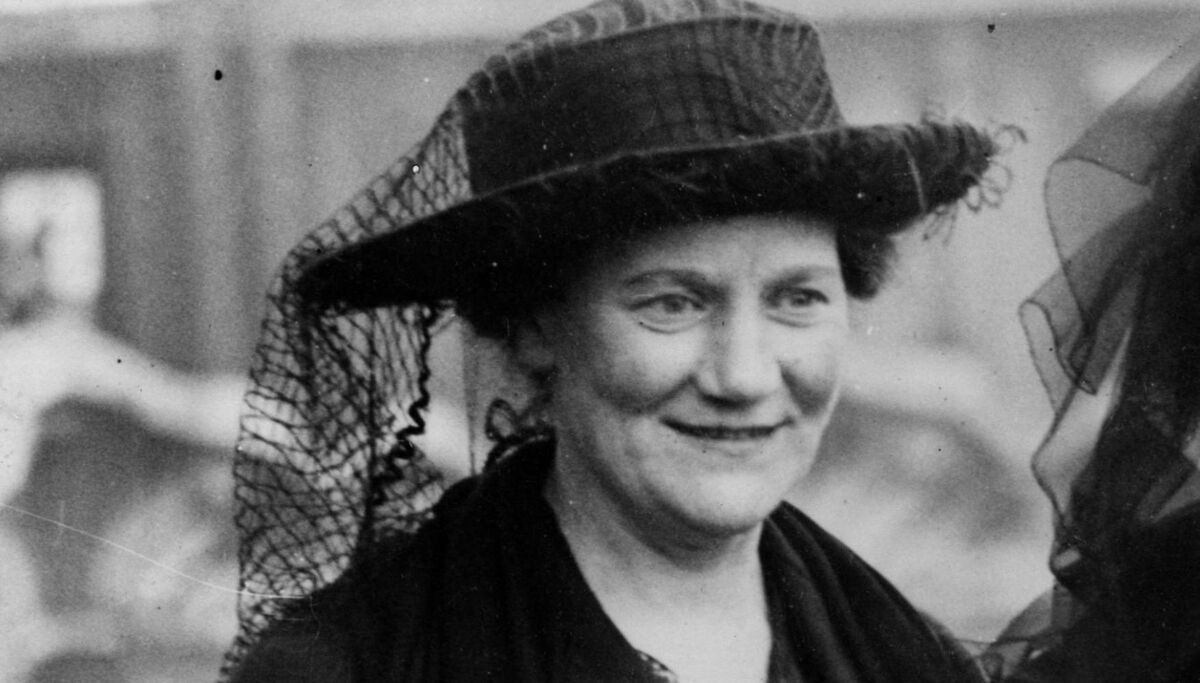
In my radical phase, there was a Conradh na Gaeilge starting up in Galway and I suggested we call it the Mary MacSwiney Conradh. I read and learned that she was a great debater. She could stand on her feet without notes and speak for up to two hours. It was written, too, that she was cranky, controlling, but she was important in the scheme of things for me.
Druid’s production of Endgame this summer brought us “bleakville” and a different kind of emptiness. It’s tragicomic and you say, “Thank f*ck for that.” You are laughing because it’s all you can do, but the despair and the greyness is not wasted on you. You trust the language to buoy you along. With Beckett, you have no choice but to trust the language. I kept thinking about the two in the bins – it must have been tough on the joints. Was there a little cushion? Nell didn’t even get a biscuit. It was a powerful production. You trusted the set and the actors. You knew there was no real way out. Beckett always brings you back to the bereft place, the place with no cushions.
Lately, I saw Reunion by Mark O’Rowe in Galway’s Black Box Theatre. There is a seanfhocal in Irish which could apply to this play: “Ní mar a shitear a bhítear” – nothing is ever as it seems. An all-consuming family get-together, which is really code for the altogether falling apart. O’Rowe gets inside the heads of his characters and tinkers with the nice switch and turns it to nasty or borderline nasty.
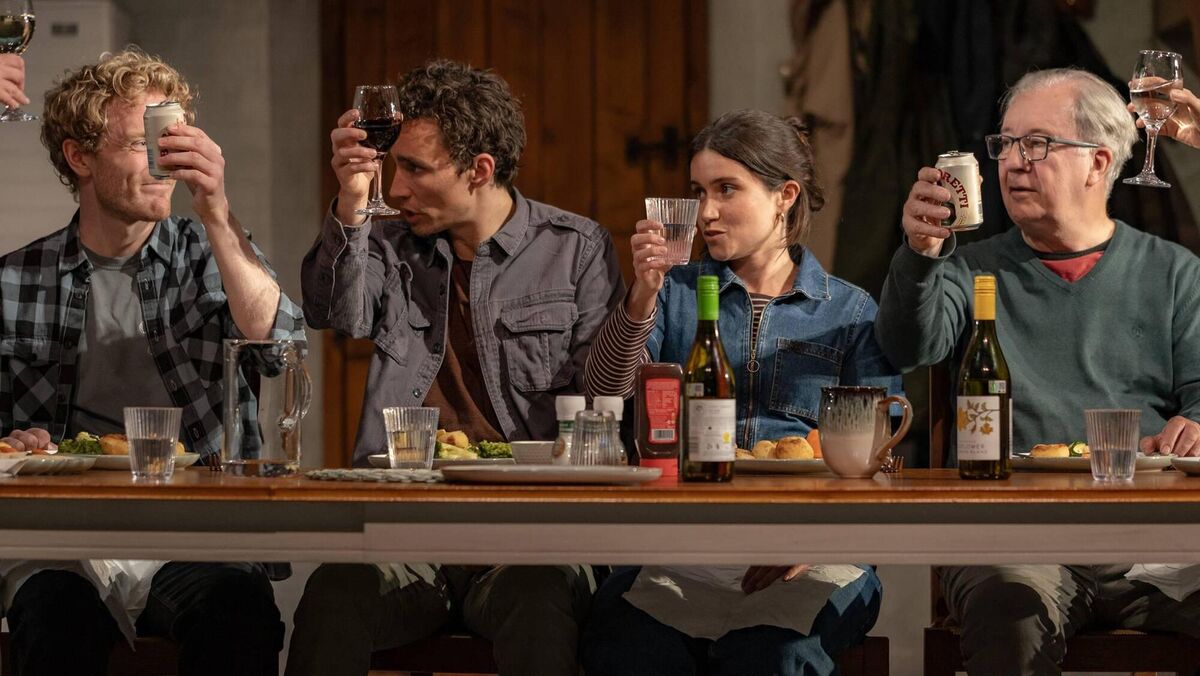
You don’t get to love his characters in the traditional way theatre in the past coaxed us to do. Their idiosyncrasies are always just a beat away. This was a great play, well-executed, sparing no one and exposing the hypocrisy of several characters. The undercurrent was edgy, nearly menacing.
The artist Yvonne McGuinness has a documentary called What’s Left Us Then about the savage appeal and cruelty of concrete. The film manifests decay and ecological pillage, as seen through hideous and spectacular concrete structures. The concrete wave with its masculine DNA is presented to us by a female narrator. It’s different, warm-hearted and revealing. Part of it featured Inis Méain, which is a favourite place I love to visit. I hadn’t seen this unfinished monstrosity on Inis Méain whose idle stationary concrete assault features in the film.
I love Seville and I love The Drifters. I was with my husband in Seville one time at this hotel and The Drifters were playing. I remember saying to my husband Christy, “We have to go.” It was fantastic.
It was a balmy night. It was so memorable. I loved all their songs. That was real nostalgia for me. All their songs bathe you in some kind of security and a time passed that was nice and pleasant and a loving time. I just love them. I’ve no issue with schmaltz.
Bernadette Kiely’s Don’t Need No Country, Don’t Fly No Flag at the Printworks Gallery in Galway during the summer was a wonder. It’s a visual arts exhibition about borders and a warming world. Flooded landscapes, drawing from memories, past emotions, the flooded street, the flooded house, river rats, debris and how you live through it on the River Nore. A haunting exhibition that lingers in the mind.
Elaine Feeney’s latest poetry collection All the Good Things You Deserve is a mesmerising collection, ducking and dodging trauma, and how to cope with its consequences when it reoccurs. In 24 cantos she takes us through her journey of survival. All we can see is courage and strength. You might be reading about trauma, but you view it through the lens of a work of art.
Martin Doyle’s Dirty Linen: The Troubles in My Home Place is an unsettling read. It’s set in The Linen Triangle, later called The Murder Triangle. Growing up in Laurencetown, in the parish of Tullylish, he didn’t see any killings but he soon realised something sinister was happening to people his parents knew, to neighbours down the road. Dirty Linen is full of empathy and compassion. You’d be nearly crying reading it, drawn in by the matter-of-fact way Doyle describes people who suffered great losses around him, the thousands of small, intriguing details that made up the lives of people he knew. This book makes sure the lost lives of his parish will never be forgotten.
